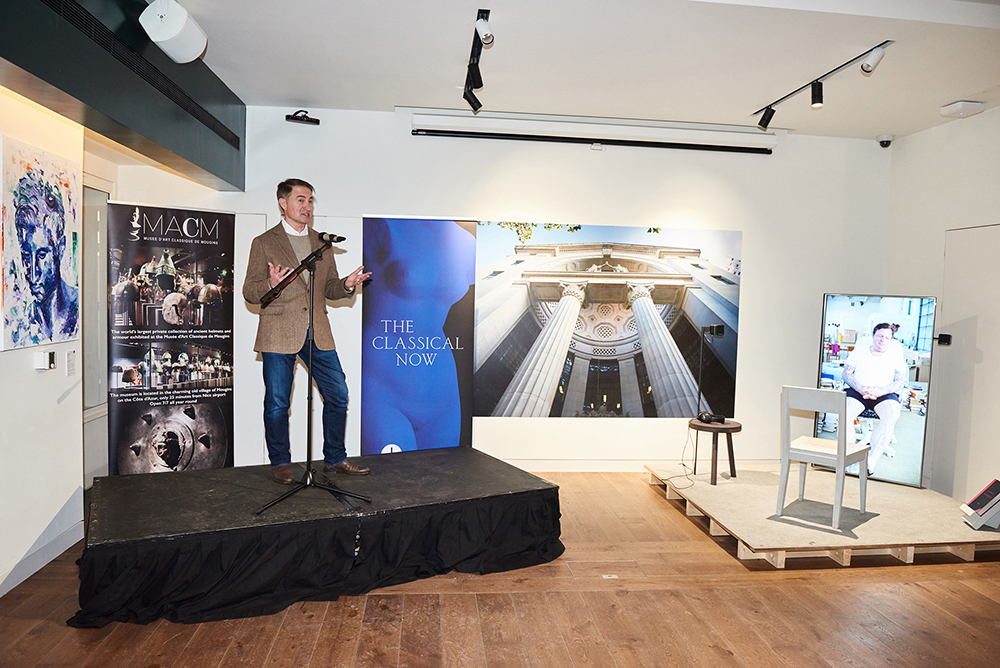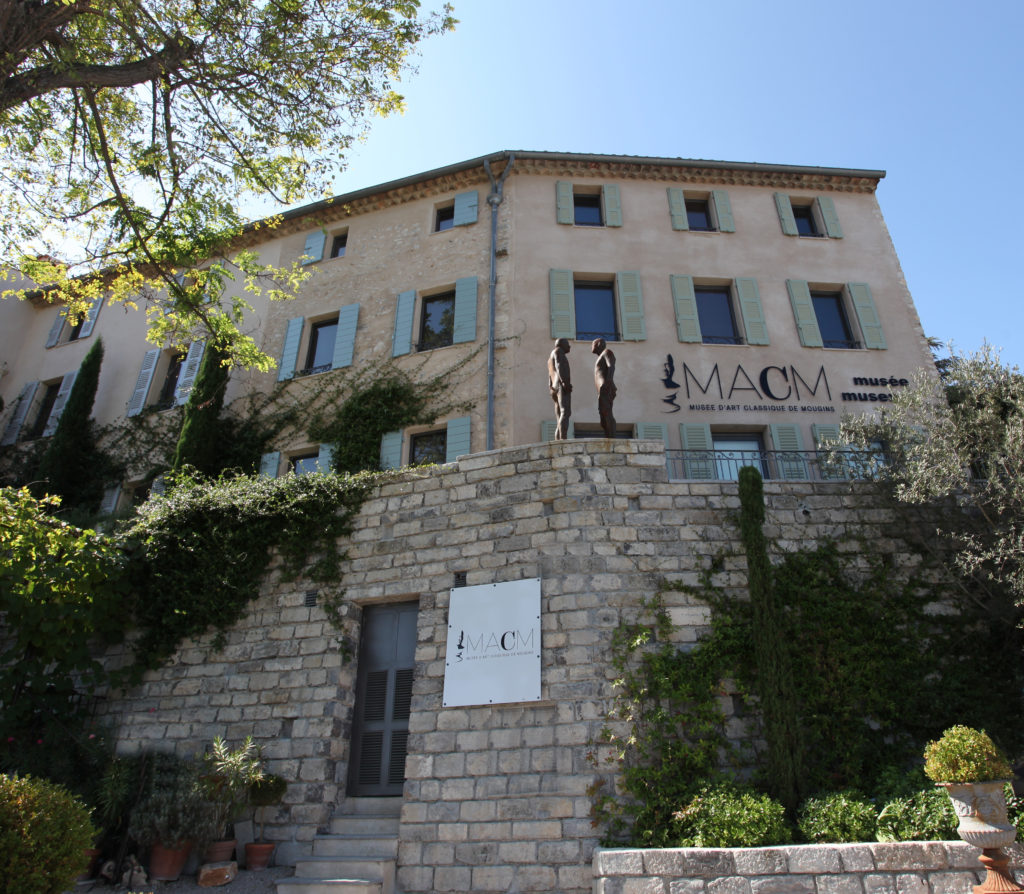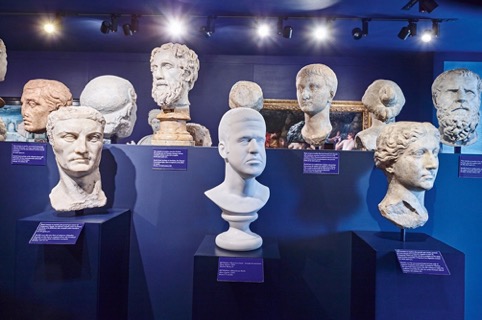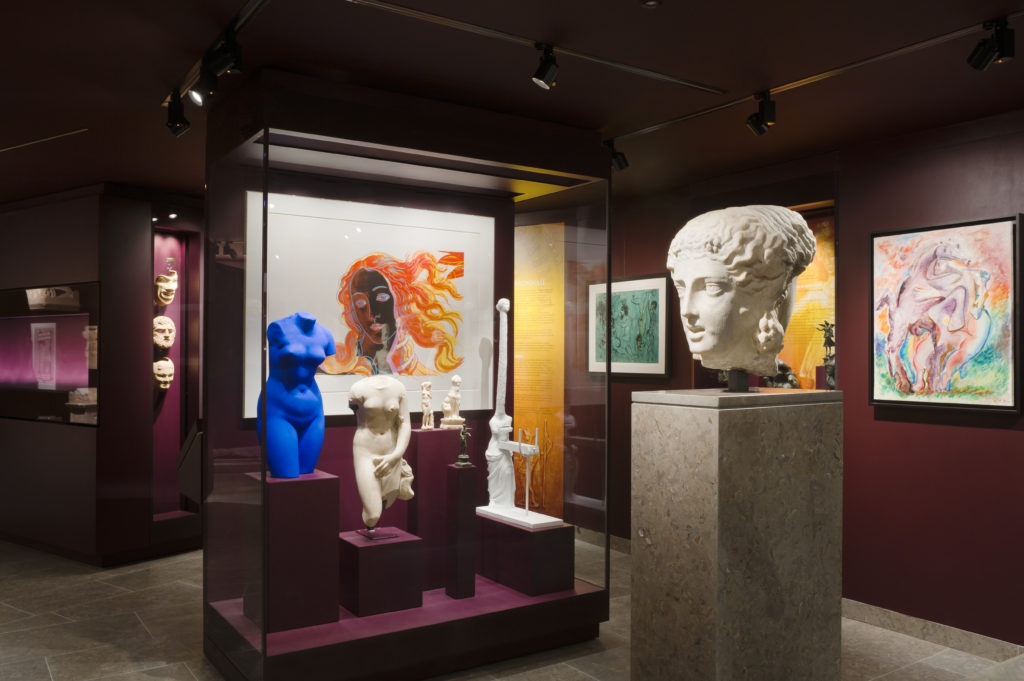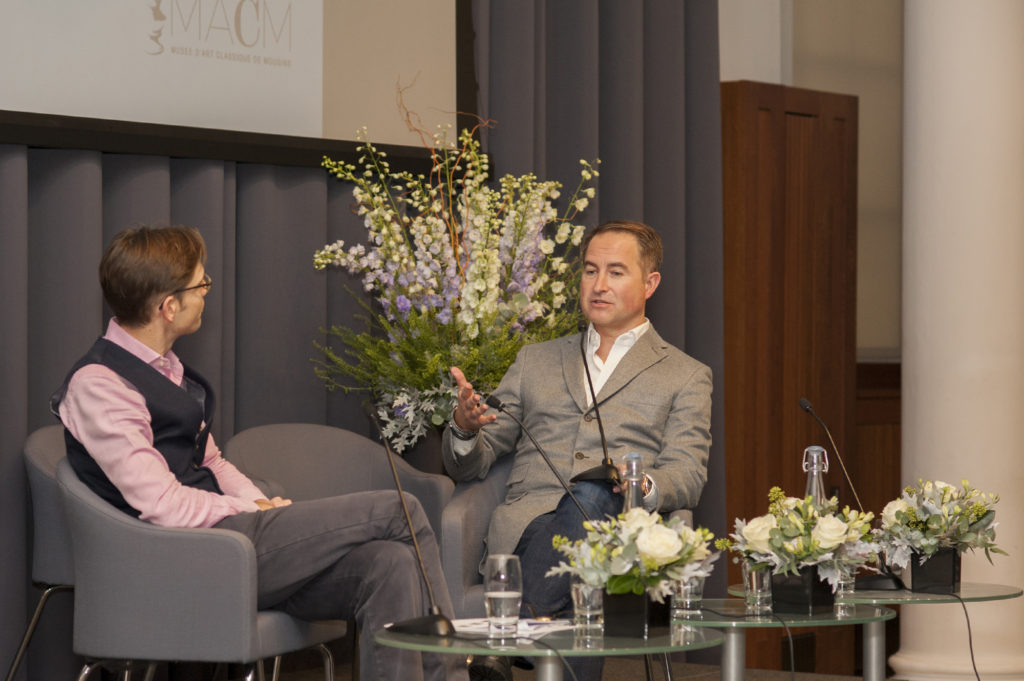The future of antiquities?
Michael Squire met with Christian Levett to discuss the history of his collection – and to ask about his interest in ‘Modern Classicisms’…
Christian Levett has amassed one of the world’s most important private collections of antiquities. In 2011, he opened his own museum in southern France to house part of the collection: the MACM (Musée d’Art Classique de Mougins). Over the last few years, and increasingly since his retirement, Levett has sponsored archaeological excavations, exhibitions and outreach projects – which included The Classical Now show at King’s College London. He is owner of Minerva, and sits on the Board of the Ashmolean Museum in Oxford and on the Arms and Armour Committee at The Metropolitan Museum of Art in New York.
MS: Christian, can you start by telling us something about the history of your collection: what were the first things that you remember collecting?
CL: Collecting has always been a passion of mine. As a young boy I used to visit shops selling old coins and medals. Whenever I could afford them, I tried to buy inexpensive items like cheaper Victorian coins and First and Second World War campaign medals. I also loved toy soldiers and making aeroplane models – those were the first things I remember collecting.
MS: So what led you to antiquities specifically?
CL: I think I had always been inspired by family visits to museums, castles and cathedrals. But it was only later that I became interested in ancient objects. Around 20 years ago work took me to Paris, and I often spent Sunday mornings in the Louvre and the Musée d’Orsay. I had started collecting again – above all, to furnish my apartment and my house in London. Back then, ordering auction catalogues in my 20s, I had always overlooked ‘antiquities’ – I thought they were restricted to places like the Louvre, Met or British Museum. Discovering what was available on the market was like a bolt from the blue: I had been financially successful, and I was drawn to these amazing ancient works.
MS: Part of your collection is now on display in southern France – at MACM (Musée d’Art Classique de Mougins). What led you to found your own private museum?
CL: The MACM really just evolved naturally from those early purchases. The collection became so large, and was clearly way beyond what I could display at home in London (and, by then, a newer house in France). I therefore decided to put the pieces on public display: I wanted them to be available for everybody to see – members of the public, as well as scholars.
MS: What’s particularly distinctive about MACM is its mode of display, showing ancient pieces alongside modern artworks that respond to Graeco-Roman art. Outside the museum, visitors to the town are greeted from below by Antony Gormley’s Reflection. Inside, we find unexpected pairings: a Marc Quinn bust amid your Roman portraits, for example, and various ‘Venuses’ – by Yves Klein, Salvador Dalí and Andy Warhol – next to a Roman statuette. Can you say something about the rationale?
CL: It appears that, however unwittingly, I was at the forefront of a trend. I’ve been connected with the twentieth and twenty-first-century art market for some time – not least through my partnership in Vigo Gallery in London. The idea for those juxtapositions really came from when I was buying antiquities and noticed so many classically inspired artworks along the way. I started actively looking for pieces with interesting, classical themes – pieces that would encourage visitors who were interested in the contemporary as well as in the ancient.
MS: So that’s how the collection got its broad ‘classical’ remit?
CL: Despite the eclecticism of the collection, I wanted to make sure the museum had a coherence – above all, that it would tell a story for visitors. At the same time, it’s absolutely astounding how many artists had a classical period in their work, emulating ancient works, drawing pieces as part of their training, responding to them. The more I collected, the more I realised the interconnection. I can’t think of anywhere else in the world that demonstrates the point better than Mougins.
MS: Among your many current projects is the exhibition you sponsored at King’s College London, dedicated to The Classical Now – part of a larger project on ‘Modern Classicisms’, which explores the interface between ancient visual culture and modern and contemporary art. Why do you think this project is important?
CL: The aim here – and it’s very much aligned with our work at MACM – is about challenging how people look at antiquities. When they’re displayed in museums, ancient artefacts are usually presented as pieces of history rather than as artworks: their significance is often presented in terms of how bewilderingly old they are. But clearly, over the years – including in modern times – artists saw things quite differently: ancient artefacts provided materials for artists to study, emulate, respond to and challenge. What appealed to me about this project is the way in which it encourages public audiences to look to antiquities through the eyes of modern and contemporary artists: that’s why The Classical Now has had such traction, in my view – it’s engaging new audiences, and across traditional divides of ‘classics’ and ‘art history’.
MS: Let me end by asking you about your future collecting plans – both for MACM, and for your own extended collection.
CL: MACM has become a living museum: local members of the public want to see new things, so there have to be some changes in the permanent displays. At the same time, it’s now become extremely difficult to buy antiquities with decent provenance – something that has always been central to my own collection. For many years I’ve wanted clearly defined provenance prior to 1970 (something which Sotheby’s also requires for its antiquities auctions), although now I’m really looking much further back than that – normally to the early twentieth century for me to even look at a piece. Partly for that reason, and in part for others, I’ve been collecting more and more works by twentieth- and twenty-first century artists. As the collection grows, MACM is prioritising loans of objects around the world, which in turn allows space for temporary installations: a case in point is our current Léo Caillard exhibition, Past is Present, which forms the partner-show to The Classical Now in London. This interview is extracted from an interview for Sotherby’s in London. Want to know more about Chris Levett and his collection? We have uploaded the film of an interview with the King’s team from November 2017 here.

